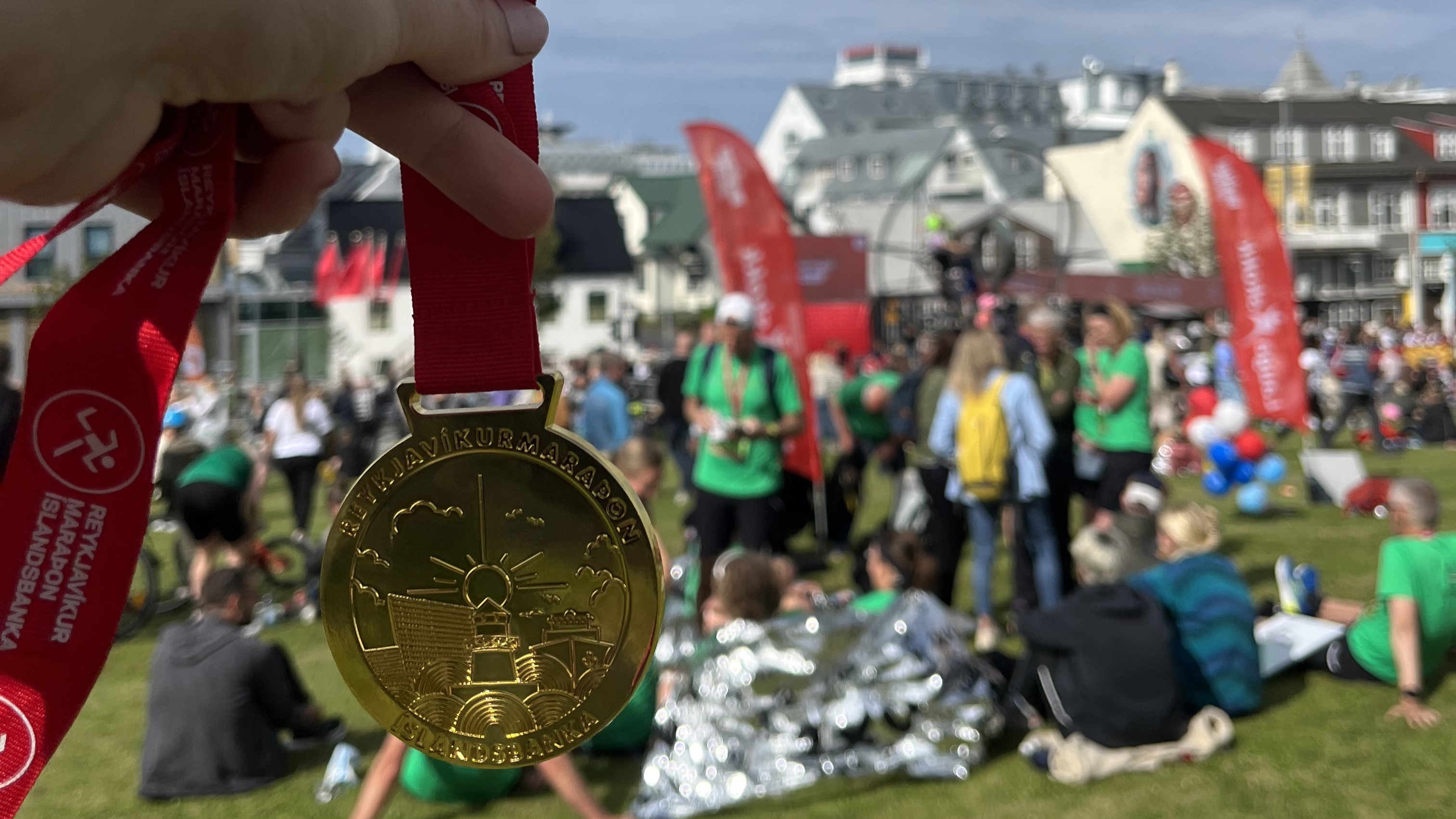Nine Things I Learned Training For My First Marathon
Here’s what’s in store if you’ve signed up for your first marathon

In August I completed one of my biggest challenges to date: running a marathon. Surprisingly, I didn’t start with this goal. I’d signed up for a half marathon months in advance and, as I gradually built up the distance of my long runs, I realized how much I enjoyed ticking off more mileage each week. Eventually, I was able to run up to 20 miles. The thought entered my mind, could I run a marathon?
After weeks of telling myself there was no way I could do it, I put my doubts to one side and went on the hunt for a race to sign up for. I felt impulsive and desperately wanted to challenge myself.
Eventually, I came across a marathon with places available and enough time to train: the Reykjavik Marathon. Iceland is one of my favorite places and I had been looking for an excuse for another trip there, so it seemed like fate.
Running the marathon was an incredible experience, but it was definitely a learning curve. If you’re thinking of signing up for one and you’re unsure what the journey will look like, here are nine things I’ll remember about the experience.
1. My Laundry Increased
I know it’s obvious, but be prepared for extra loads of washing every week. Also be prepared for the panic when you realize your favorite bit of kit isn’t clean for your long run. Many Saturday night pints in the pub were sacrificed so I could do emergency laundry and ensure things would be dry for my Sunday long run.
2. I Got Hungry
My appetite really increased, especially the day after a long run. At first, I must admit I stressed at my new daily calorie intake, but as I continued and my runs got longer, every meal I ate I saw as fuel to make me stronger. I tried to ensure I was eating plenty of carbs for energy, protein to keep me full, as well as trying to nail my nutrition.
This didn’t come naturally to me as a woman who grew up in the early 2000s and had been told by toxic diet culture to beware of carbs and calories, but then I also interviewed an expert about sports nutrition for women who emphasized to me that carbs are not the enemy. The author of a book about marathon training for women also told Coach that all the nutritionists and dietitians she spoke to said women don’t eat enough calories while training.
Sign up for workout ideas, training advice, reviews of the latest gear and more.

3. Strength Training Is Important
Runners need strength training to make it through all this running in one piece, something I experienced first-hand. I’ve been prone to knee pain ever since my (super-cool) rollerblading days ended with a knee injury. In fact, in the past I’ve given up running for months at a time because my knee would call it a day.
This time round, I committed to doing things differently. Every Tuesday morning I would spend at least 20 minutes strengthening my lower body and I didn’t have one major injury during my training. I experienced a couple of niggles that were resolved in a matter of days with rest followed by more strengthening exercises, but otherwise my knees took it in their stride. I don’t doubt that this is because of my commitment to strength training.
4. Long Runs Can Be A Mental Challenge
I’ve always found that running can be as much of a mental challenge as a physical one. When you’re out for hours at a time it can get pretty boring, even with the most dramatic true crime podcast. I would beg my husband to tag along for parts of my longer runs, but once he had headed on home, it was always a battle to convince myself not to give up. The promise of post-run treats were always a big help, but constantly telling yourself you can do hard things was also incredibly important. Mindful running can help with this.
5. Comparison Is The Thief Of Joy
I spent too much time at the start of my training comparing what I was doing to others and it killed my motivation. Your nutrition strategy may not be the same as the TikToker you follow, you might look different to the athlete you see on TV, you may run slower than the person that passes you in the park, and that’s OK. Focus on you instead.
6. Maranoia Hits Hard In The Last Week
The week before my marathon I was filled with doubt. Could I actually run 26 miles? Would my ankle hurt? Would my knees give in? Had I chosen the right kit? The night before, I convinced myself that I’d be unable to finish and end up dropping out. I was even reluctant to share any expo or race-prep images on social media because of how embarrassing it would be when I dropped out.
These feelings, I’ve since learned, are called maranoia—marathon paranoia—and is a common feeling in the lead-up to your race. Advice on this is as old as time: trust in your training, remember all the hard work you’ve put in and relax. Much easier said than done, of course.

7. The Last Six Miles Are As Hard As People Say
I’ve often heard people talk about the last six miles of a marathon.
“The real race starts at mile 20.”
“You don’t know you’re running until the last 10 kilometers.”
“After mile 20, that’s when it hurts.”
Despite all that I had read and heard, I had never really gave it much thought. Surely, that’s an individual experience and depends on how your race has gone so far? That’s what I told myself.
Erm, no, apparently not. Mile 19 was one of my favorites of the race. The runner’s high kicked in, I knew I was close to the finish line—I felt great!
Mile 20 hit, and so did the wall. My mind was telling me that six miles was still a long way to go. My fatigued brain was even showing me my normal six-mile route on Strava and taunting me with “you still have all this to do”. Not even my banging playlist could help me through the mental struggle of these last few miles. Willpower, and willpower alone, got me to that finish line.
8. Crossing The Finish Line Is One Of The Best Feelings Ever
Despite feeling fairly comfortable most of the way, my maranoia stayed with me until around the 18-mile mark. It wasn’t until this point that it hit me, I really was going to finish this race. As I struggled through the last six miles, the only thing keeping me going was the thought of crossing the finish line. As I approached the last kilometer, the adrenaline was something else, knowing the finish line was almost in sight. Admittedly, this subsided a little when my watch hit 26.2 miles but the finish line was still half a kilometer away, but I digress.
Upon turning the corner and seeing the finish, the crowds and my cheering husband, the adrenaline returned. As my dreadfully unflattering finish line photos show, I was pretty delighted to be at that line and to have achieved something so amazing.

9. It’s Addictive
This one probably will vary from person to person, but now that I’m home and finished with my training plan, I’m itching to start another. Whether it’s the rush of adrenaline when you cross the finishing line or the huge sense of achievement, something about the experience has made me want to do it all over again. The challenge of those arduous 20-mile training runs don’t seem so bad when you know how it turns out.
If you’ve signed up for your first marathon, check out our beginner marathon training plan to see if it’s right for you.

Lois Mackenzie is a fitness writer working on news, features, reviews and buying guides for Coach and sister site Fit&Well. Lois is a hill walker and avid runner who has just completed her first marathon. Before joining Coach, Lois worked as a senior SEO reporter at Newsquest Media Group.
